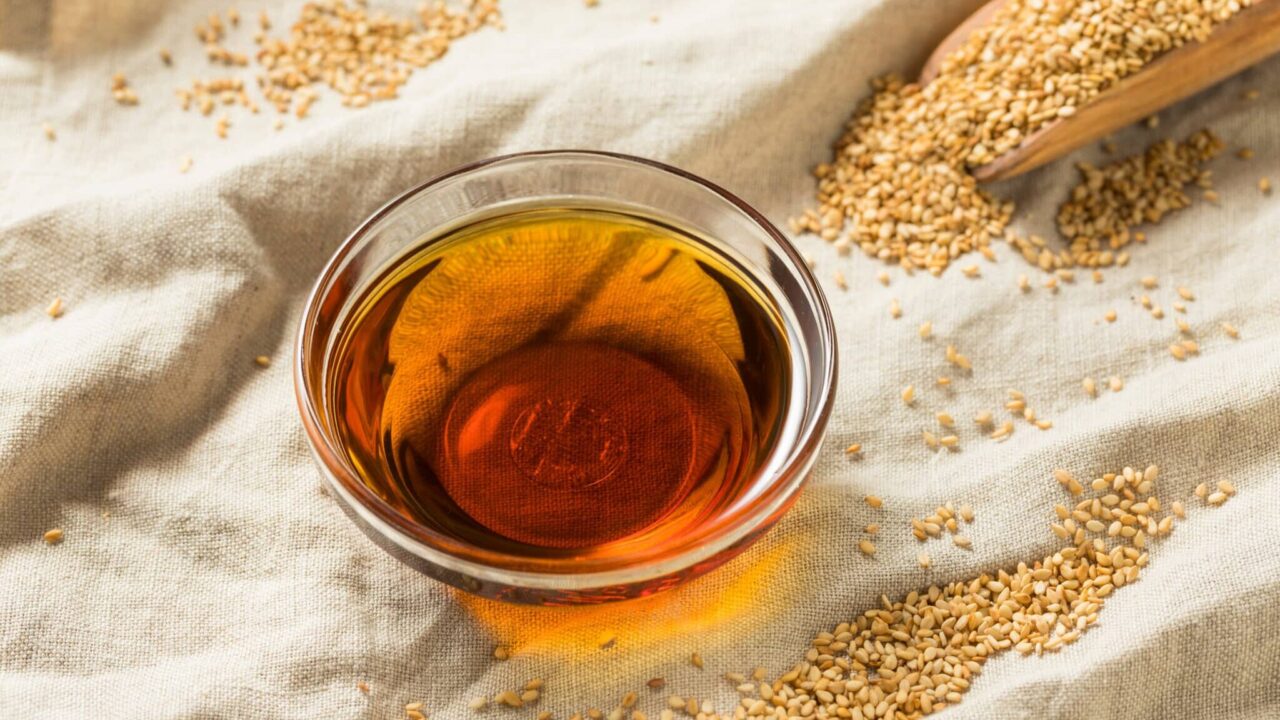
Image Credit: Shutterstock.
Whether you are cooking Chinese, Korean, Japanese, or Thai food, here are seven staple East Asian sauces and condiments that are a must-have if you love to cook Asian food at home.
There’s good news if you’re worried about being tight on space at home in your pantry! You can use these sauces interchangeably with any type of Asian or Western cuisine so that these Asian condiments can do double duty in the kitchen. They will most definitely elevate any dish you use with them.
Soy Sauce
If you could only pick one Asian sauce from this list in your pantry, this would be it. Soy sauce is one of the most versatile ways to flavor anything, and its sole purpose is to provide savoriness and umami.
You can use soy sauce in stir-fries, marinades, sauces, or anything you want to add savoriness to. For any recipe that uses salt, you can substitute it with soy sauce instead.
This king-of-sauces can also be used in Western cooking in stews, braises, and pasta sauces for that extra umami flavor, giving your dish another depth of flavor.
There are a few types of soy sauces, so they may be overwhelming to shop for, especially in an Asian grocery store that dedicates whole aisles to it. For the most part, the two most common soy sauces in Asian cooking are light soy sauce (aka regular soy sauce) and dark soy sauce.
Although it is called light soy sauce, it doesn’t mean it’s light on saltiness – it is quite the opposite and is saltier than dark soy sauce. The word light references the color of the soy sauce and how thin it is. This type would be the must-have of all the soy sauce varieties in your pantry.
Dark soy sauce, on the other hand, is thicker in viscosity and usually contains less salt than light soy sauce. It is mainly used to give dishes a dark brown color. If you’re tight on pantry space, skip this one and go for light soy sauce instead.
Sesame Oil
Most oils are used as an element of fat for cooking, but not sesame oil. It is solely for flavoring. It is made from pressed sesame seeds and has a deep nutty aroma and flavor.
Sesame oil is used in Chinese and Japanese cuisines, but it is most commonly and heavily used in Korean cuisines to make popular noodle dishes like Japchae (Korean Glass Noodle Stir Fry), Oi Muchim (Korean Cucumber Salad), Pork Bulgogi and Kimchi Fried Rice.
There are many varieties of sesame oils, ranging from light-colored ones cold-pressed to darker toasted sesame ones. The general rule of thumb is the darker it is, the more flavorful it will be.
Oyster Sauce
Oyster sauce is a savory, rich, and flavorful sauce made with oyster extract and contains a lot of umami flavor. Like soy sauce, it can be used in every type of Asian cuisine and Western cooking as a substitute for salt.
Although it has a briny savoriness to it, it also has a touch of sweetness which makes it a great sauce to flavor noodles dishes, add to any type of meat marinades or mix into stir-fry sauces.
Hoisin Sauce
Hoisin sauce is a thick dark sauce made of fermented soybeans with a sweet and savory flavor.
“Hoisin” means “seafood” in Chinese. Despite its name, it actually doesn’t contain any seafood in it, (nor does it taste like seafood).
Unlike oyster sauce, which has a bit of a briny flavor, hoisin sauce is much sweeter and has more of a spiced flavor with hints of five spice.
In Chinese cooking, you will commonly use it in stir-fries, dipping sauces, and meat marinades. It is especially popular in Sweet and Sticky Char Siu (Chinese BBQ Pork) to give it its deliciously sweet and sticky signature glaze.
Fish Sauce
Fish sauce is the cousin of soy sauce and is used predominantly in Southeast Asian cuisines like Thai and Vietnamese cooking.
This sauce contains salt and a lot of umami, but it also adds a bit of body and depth to its flavor, which comes from the fermented fish. Although it has a bit of a fishy smell, when used in cooking, there is virtually no fish flavor. Just keep in mind that a little will go a long way!
Fish sauce will add another dimension of flavor to anything from Thai curries to stir-fries and soups.
In Vietnamese cooking, it’s most commonly used to make a popular Vietnamese Fish Sauce Dipping Sauce (Nuoc Cham / Nuoc Mam) which is used to flavor vermicelli noodle bowls and dip spring rolls.
Like soy sauce, you can use it in Western cooking as well, in pasta sauces, braised meats, marinades, vinaigrettes, and dips.
When buying fish sauce, look at the ingredient list and ensure it contains only fish and salt. It may also include some sugar, but you generally want to avoid anything that contains preservatives.
Like all the sauces on this list, fish sauce will last forever and should be stored in your pantry. If you don’t use it often, you can also keep it in your fridge.
Sriracha Chili Sauce
If you love spicy foods, then this would be your go-to Asian sauce. Not only does it give all your dishes a bit of a kick, but this sauce will also give your meals a wonderful garlic flavor as well.
Sriracha chili sauce makes it easy to give any type of stir-fry, braises, rice bowls, and noodles a spicy, garlicky kick by adding it directly to your dish right before you eat it.
This spicy Asian sauce is also not limited to just flavoring Asian dishes. It’s delicious in hot dogs, sandwiches, hamburgers, mixed with salad dressings, eggs, or mixed with mayonnaise to make a spicy sriracha mayo for dipping your fries or vegetables!
Chili Oil
Although there are chilies in this sauce, it’s called chili oil, (most chili oils are not spicy and are used as a condiment to enhance dishes like dumplings and noodles).
What makes this sauce so awesome is it can create easy 5-minute comfort food meals out of simple ingredients like boiled noodles by mixing a touch of soy sauce with it.
You can also add this to fried rice and stir-fries to give it an additional boost of flavor as well.
Adding a touch of vinegar, sugar, and soy sauce can also transform this simple chili oil into a delicious dumpling dipping sauce.
This article originally appeared on Wealth of Geeks.
Joyce Lee
Joyce is the founder of Pups with Chopsticks, a site dedicated to Asian recipes and cooking tutorials that she started in 2016. She believes that cooking is all about connecting with people by learning about other cultures both older and younger generations.
On her food blog, she walks you through the process of making the tried-and-true recipes that she creates and uses in her home. They feature practical tips (and mistakes) she has experienced in the kitchen and personal stream-lined processes to ensure that anyone who makes them will have a successful (and delicious!) outcome.
She loves all things food and dogs. In her spare time, she nerds out on video games, relaxes with board games, tends to her tropical garden at home, and spends time with her husband and dogs.
Joyce has been featured in The Toronto Guardian, Parade Magazine, Greatist, PureWOW, and Well+Good








Leave a Reply